Thrustmaster T248 review: entry-level excellence
The T248 is an excellent force-feedback entry-level racing steering wheel for gamers

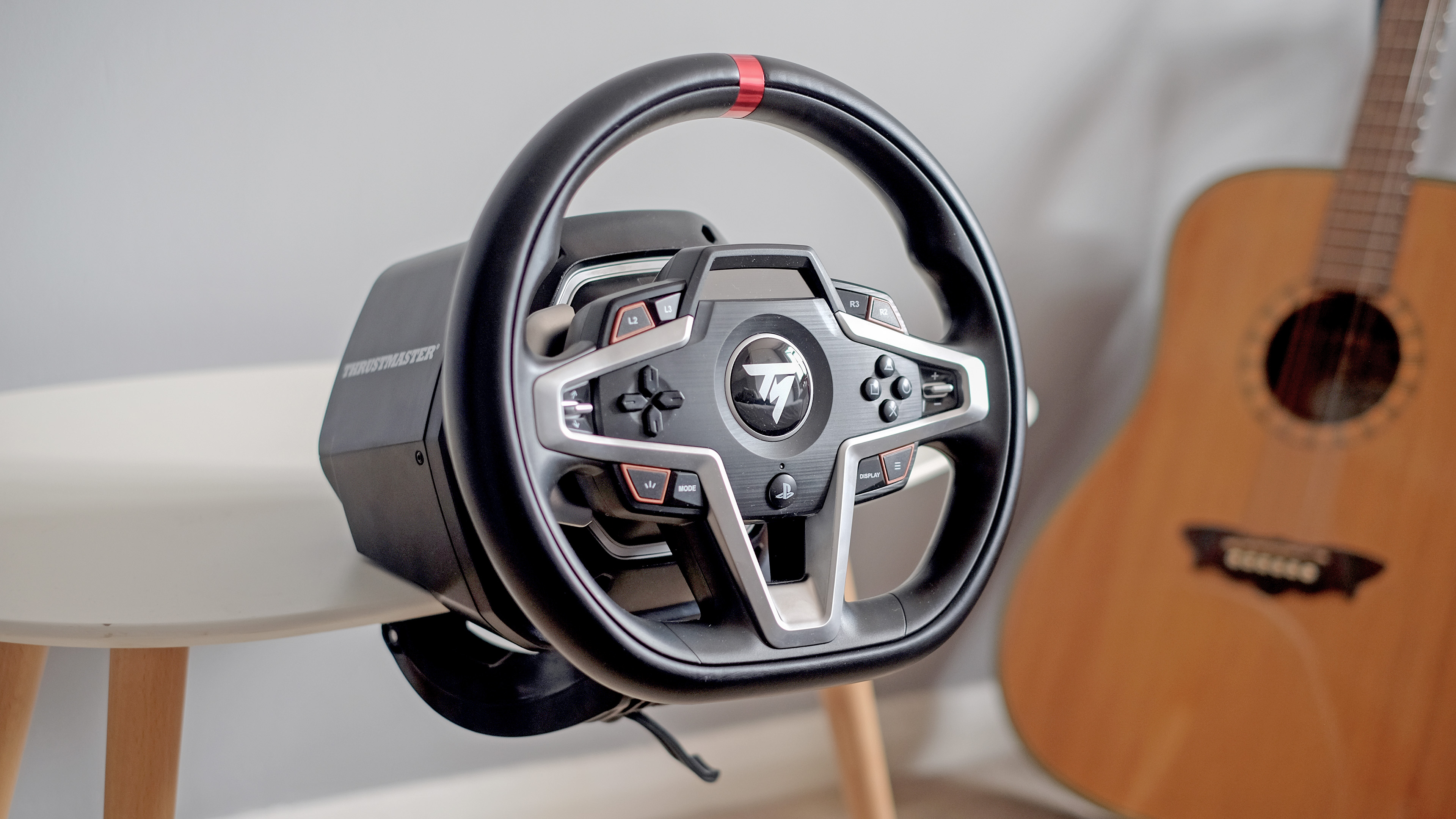
While the T248 does not bring about a revolution in Thrustmaster build quality or force feedback, it does level-up the entry-level experience with fab pedals and an advanced new on-wheel telemetry display.
-
+
Solid force feedback strength
-
+
Neat display with telemetry data and on-wheel customisation
-
+
Great pedals for a wheel of this class
-
-
Loud and clunky gear shifters
-
-
Hybrid force feedback is not ultra-smooth
-
-
Logitech wheels feel better-made
Why you can trust T3

The T248 is Thrustmaster’s entry-level force feedback racing wheel. It brings neat technological innovations in a few areas, but a mildly frustrating lack of real progress in others. However, if you’re looking to dabble in the world of force feedback racing wheels without spending an absolute fortune, it may well be the perfect pick.
Thrustmaster has massively upgraded the pedals it bundles with its affordable racing wheel here, offering the kind of board you could easily spend £150 on separately elsewhere (actual RRP £120). If you’re out for a “one and done” solution then you could do far worse.
The Thrustmaster T248 isn’t really a step forward in all respects though. I prefer the force feedback you get with the older Thrustmaster T300RS and Thrustmaster TX — sister wheel sets for Xbox and PlayStation respectively. And while Thrustmaster has changed up its build style here, Logitech’s wheels have a clear edge for raw feel and quality.
Thrustmaster T248: Price and Availability
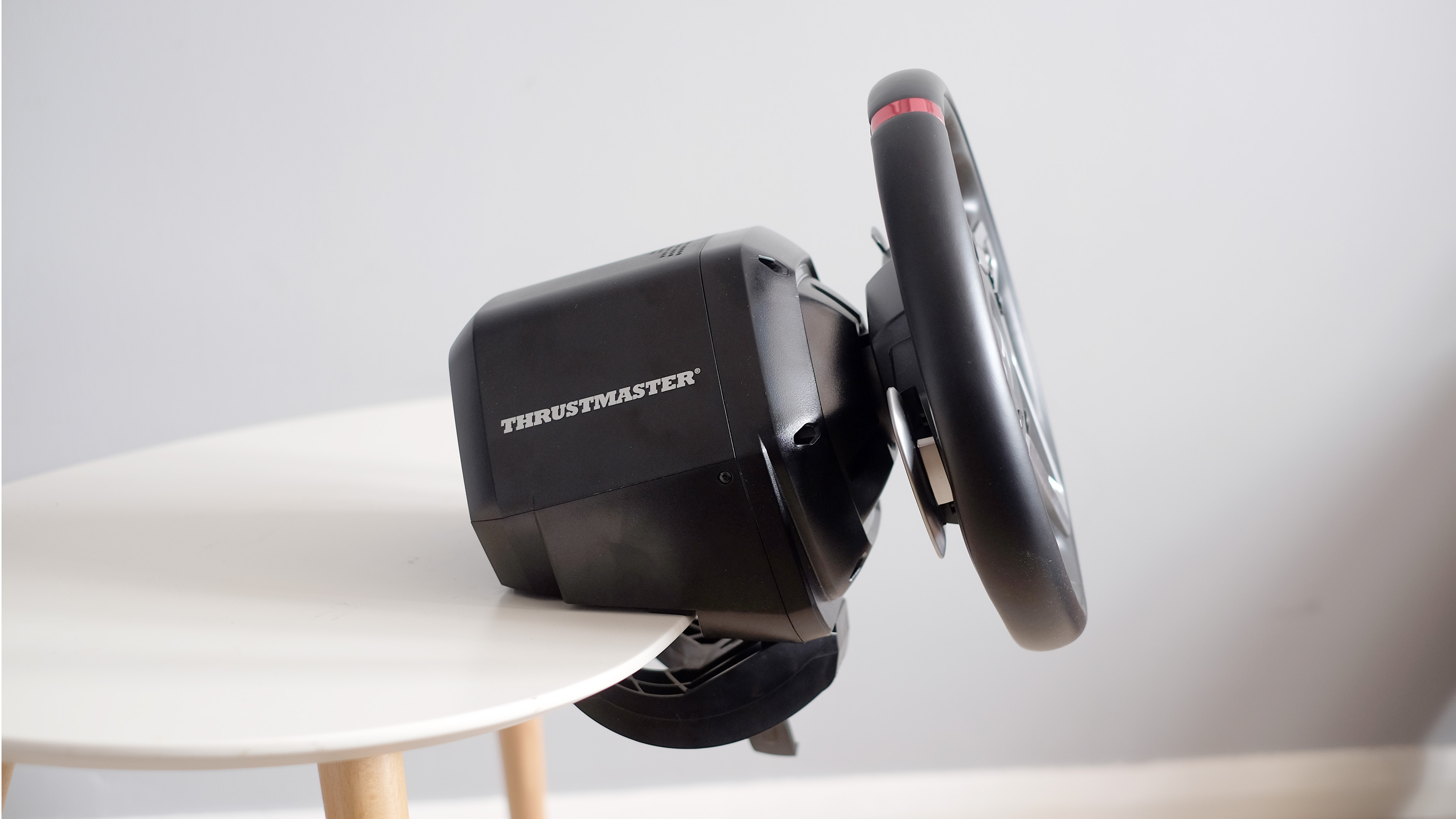
The Thrustmaster T248 went on sale in very late 2021, although I didn’t get my hands on it until well into 2022. At this point it had been years since Thrustmaster had launched a moderately affordable racing wheel.
The company's T150 arrived in 2015. So we were overdue something new. The T248 costs $399.99/£299.99, which, granted, is pricier than the T150. However, the changes in tech and pedals largely justify the price hike.
I’m using the PlayStation version of the wheel for this review. There’s a separate version for Xbox consoles. Make sure you buy the right one as they are not interoperable. It’s annoying, but the norm for force-feedback racing wheels (as Sony consoles require a bespoke compatibility chip to work).
Thrustmaster T248 review: Design
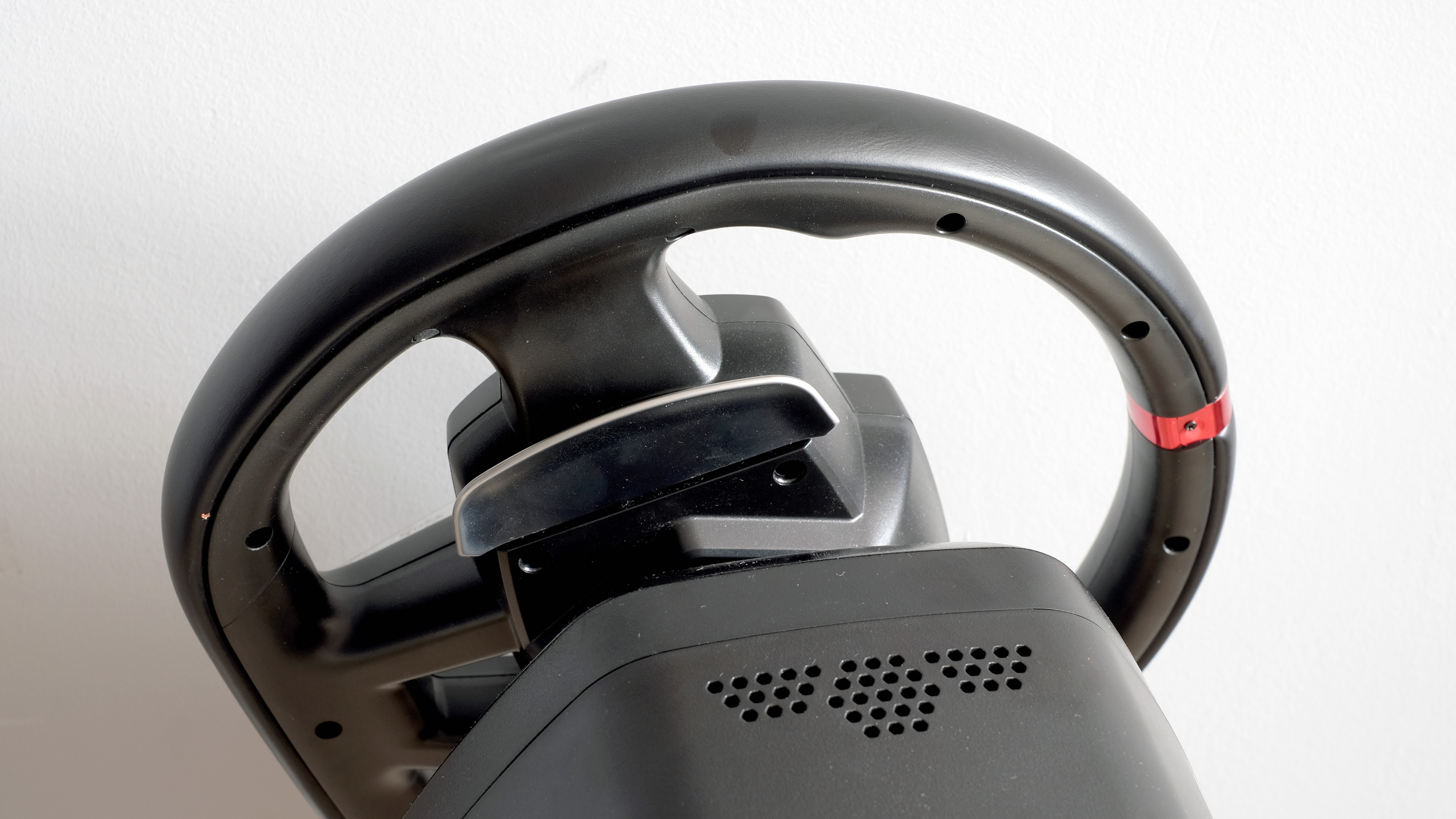
The Thrustmaster T248 is the complete package. It includes the wheel base, the basic mounting hardware, and a pedal board. You can add the Thrustmaster TH8A gear shifter if you want, for a cool £169, but it’s not really necessary as there are clicky race shifters behind the wheel rim.
Get all the latest news, reviews, deals and buying guides on gorgeous tech, home and active products from the T3 experts
Where you are going to mount the thing is one of the first considerations for any prospective wheel buyer. The good news is the Thrustmaster T248 isn’t anywhere near as demanding as, say, a chunky Fanatec DD. This is a relatively light plastic wheel base perfectly happy to be mounted using the simple plastic clamp included in the box. There are also mounting points on the bottom for fancy folks with a dedicated chair.
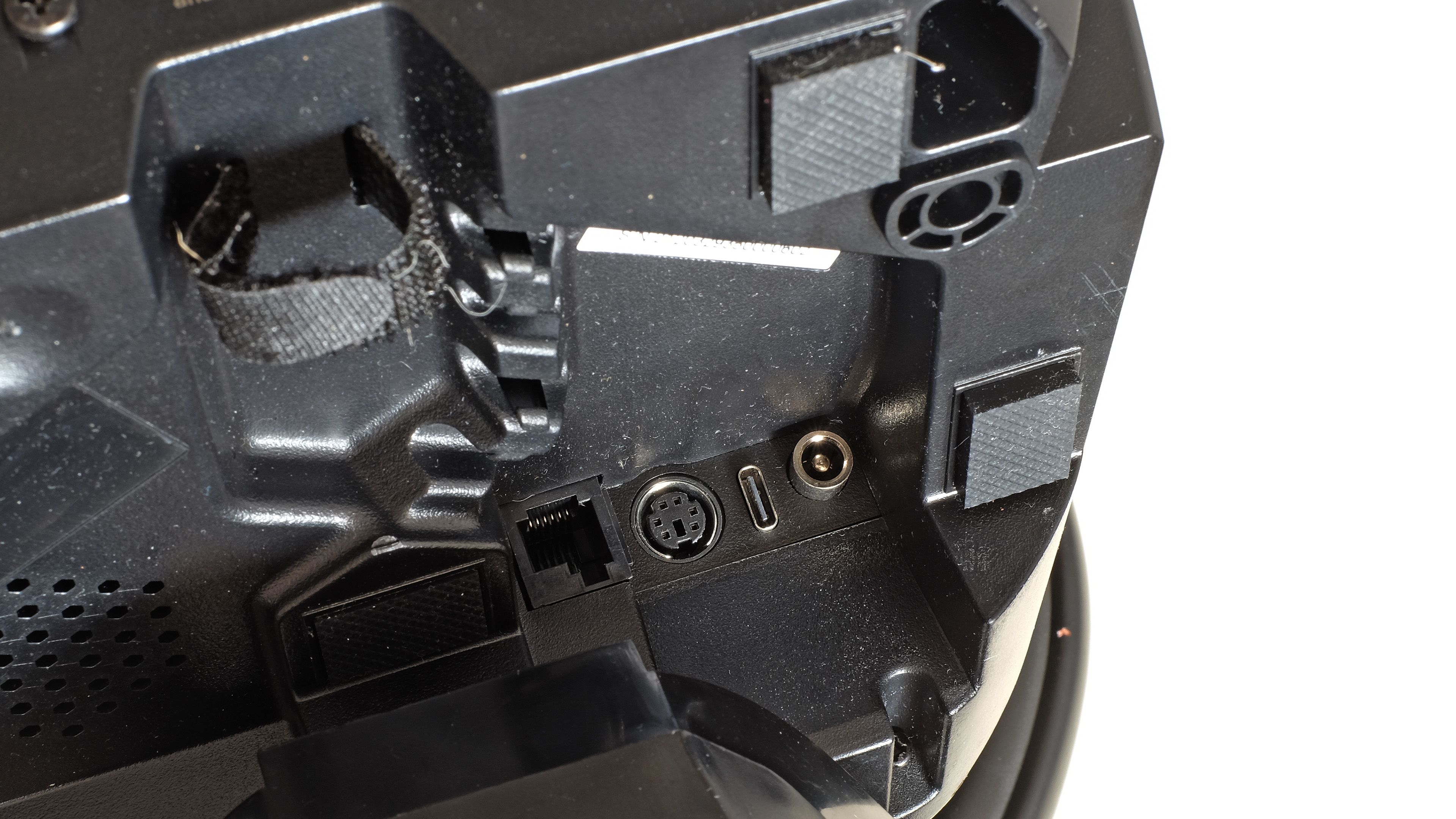
The Thrustmaster T248 is effectively an upgrade to the classic T150, a cheaper racing wheel released way back in 2015. Thrustmaster has classed-up the design in a couple of ways though.
A synthetic leather wrap replaces the plastic and rubber grip surfaces of Thrustmaster’s older wheels. However, it only covers the outer half. The inside part is good old textured plastic, and Logitech wheels like the G29 and G923 still feel significantly nicer.
You see this throughout the wheel. Logitech’s outer wheel core is aluminium, the Thrustmaster T248’s is plastic. The Logitech G923’s gear shifters are metal, these ones are plastic.
This is important stuff when the job of a racing wheel is to enhance the suspension of disbelief — to make it feel like you’re actually racing a car. However, the shifters are the only part I actually find genuinely disappointing. These are the loudest, clonkiest gear levels I’ve used in a racing wheel to date. Thrustmaster’s aim seems to be to ratchet up the shifter feedback, but I find the metal shifters of both the Logitech G29 and Hori DLX much more comfortable.
If you want a Thrustmaster that has more of a high-end feel, pick up the Thrustmaster T300RS instead. It’s my favourite of the sub-£400 wheels today, even if it has been around for more than half a decade.
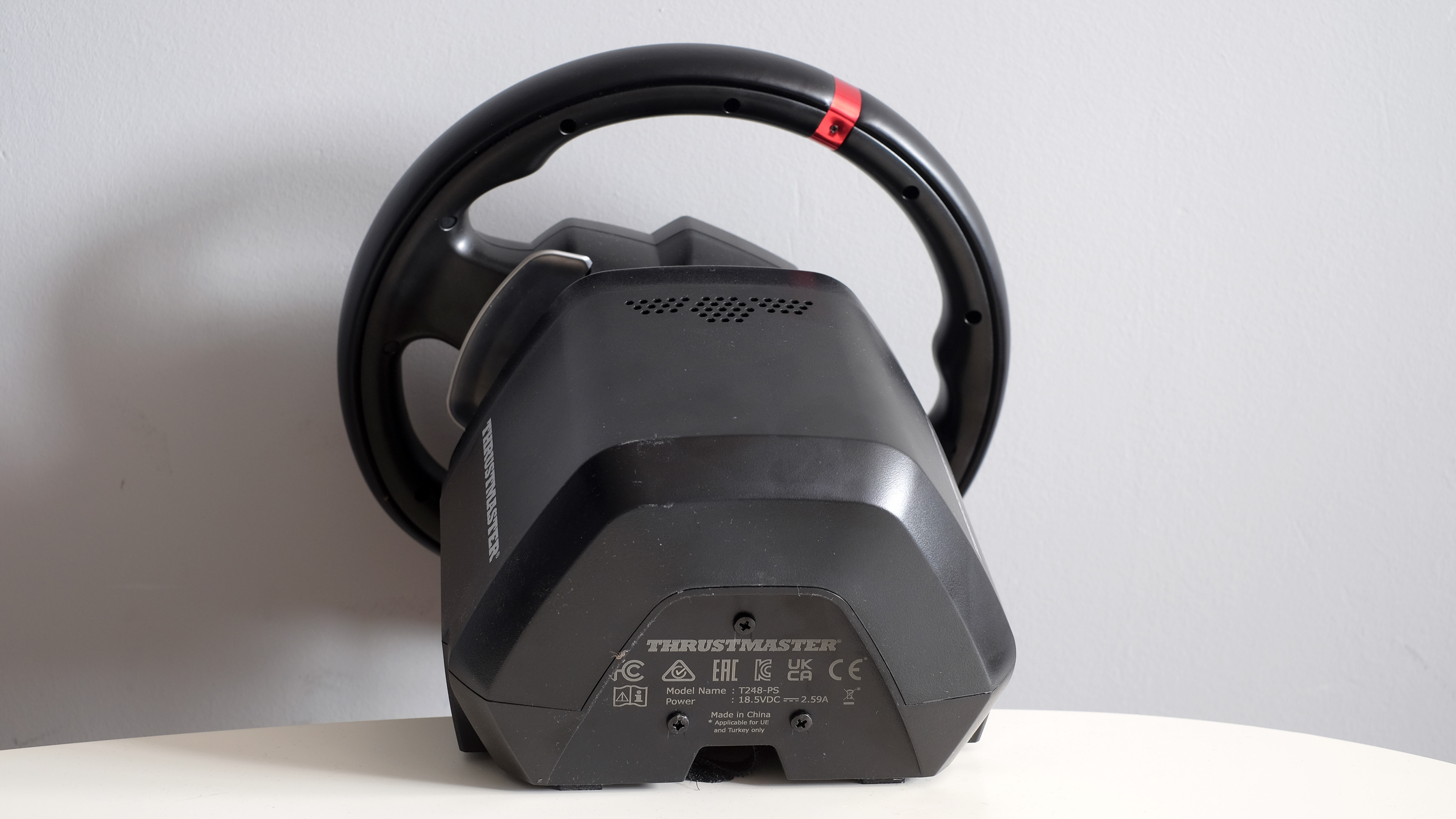
There are some meaningful improvements here though. A little screen sits in the middle of the wheel. This lets you alter stats like force feedback strength and max wheel rotation, without relying on software within the console or PC you plug the T248 into. It will also display telemetry data like the lap count, RPM and speed, in a bunch of games. Several of the big hitters are already on the list.
Below I've listed many of the supported games, specifically the ones that optimised to use the screen. Is it fluff? Maybe. Would a higher-end rim enhance the experience more? Probably. I do love it for slower-spaced games like SCS Software’s American Truck Simulator and Euro Truck Simulator 2, though, where riding the speed limit carefully is a big part of the game.
- American Truck Simulator
- Assetto Corsa Competizione
- Automobilista 2
- Dirt 5
- Euro Truck Simulator 2
- F1 2020
- F1 2021
- F1 22
- Gran Turismo 7
- iRacing
- Nascar 21
- RaceRoome Racing Experience
- WRC 10
Thrustmaster has also made bigger upgrades to the pedals.
The Thrusmatser T150 included a pretty naff, plastic two-pedal board. The T248 includes a genuinely good three-pedal board superior to the one included with the Hori DLX or the Logitech G923/G29 — the latter which used to have the best available with a moderately priced wheel.
The T428's pedal caps are metal, the resistance is good, and you can significantly alter the feel of the brake pedal to suit your taste and setup. Thrustmaster includes two springs in the box, and a rubber spacer lets you make another adjustment — for four flavours of brake feel.

This is nerdy stuff, but it’s attention to detail that you typically don’t see in an upper entry-level racing wheel. Want more nerd? The pedals use magnetic sensors instead of potentiometers, which won’t age in the same way — it means perfect accuracy for years, folks.
These pedals also highlight why buying one of these things is such a headache. There’s no outright winner. Logitech and Thrustmaster have their own strengths and weaknesses.
Thrustmaster T248 review: Force feedback

Thrustmaster says the T248’s force feedback is 70 per cent stronger than that of the old T150 (PS4/PS5) and TX (Xbox) sets. I find its force feedback to be noticeably more powerful than the Hori DLX and the classic Logitech G29-series wheels.
However, it otherwise uses a comparable internal setup to the T150, one with both gears and a belt in the transmission train that converts motor movements into those lovely force feedback effects. This means that the wheel’s rotation has a slightly notchy, granular character, and in some games certain feedback effects will feel “grindy”, almost like a buzzing sensation.
Here are a couple of examples: In Euro Truck Simulator 2 you steer with tiny nudges of the wheel, which makes the less than smooth rotation quite obvious; in Gran Turismo Sport, loss of wheel traction can almost feel like a vibrating phone going off in your hand if you’re not careful about the force feedback settings used.
It’s because — when maxed — the force feedback bottoms out at these moments, the equivalent of audio clipping. It reveals the less than ultra-refined character of the force feedback system, that the headroom isn’t anything like the Thrustmaster T-GT II’s or Fanatec DD’s.
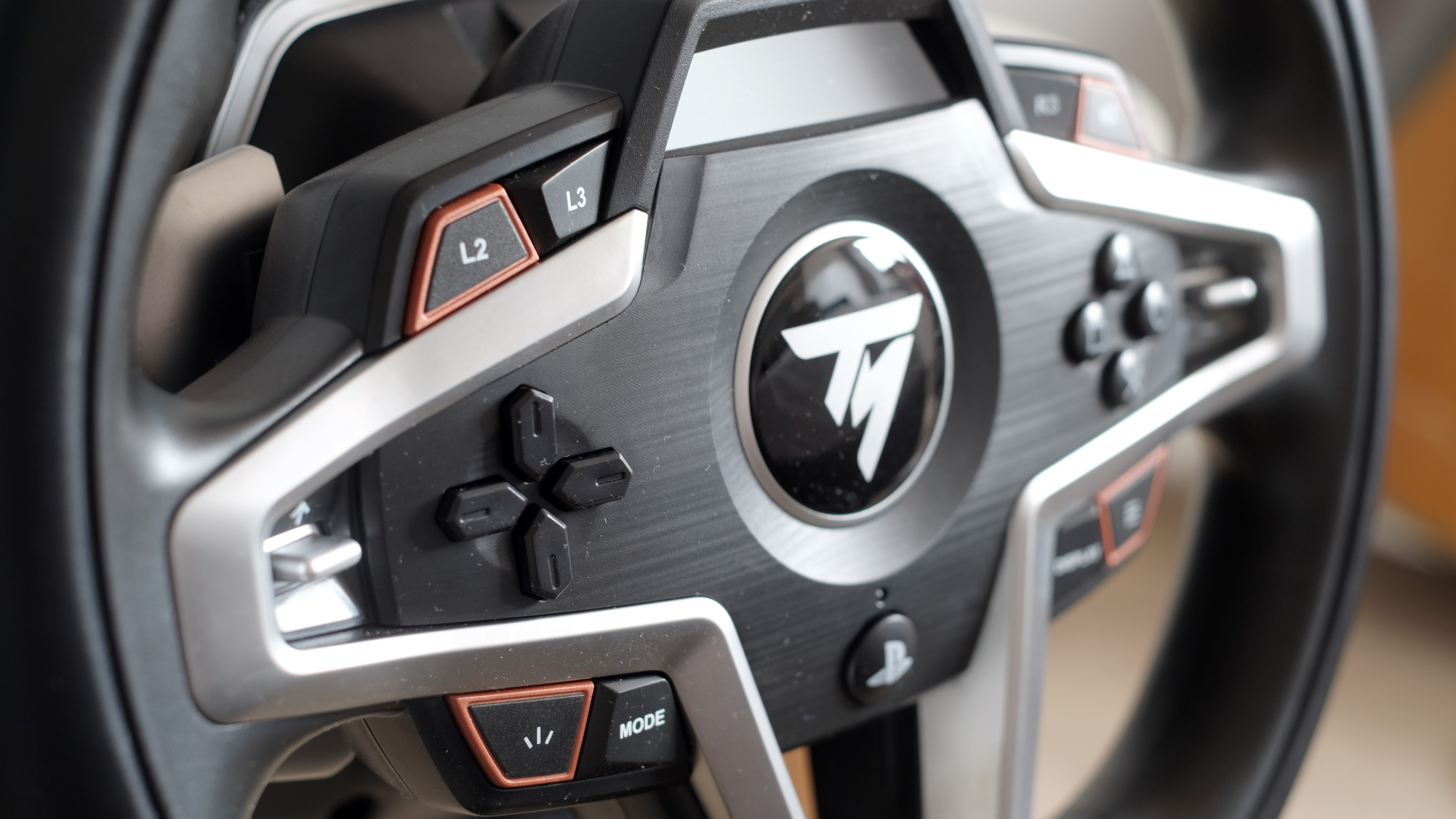
This isn’t a reason to pick one of the direct rivals instead. The Logitech G923 and Hori DLX aren’t smooth either. Logitech’s all-gear system is actually less smooth. However, if you jump up to the older Thrustmaster T300RS you get an all-belt system that is a bit more powerful and noticeably smoother.
Power-wise, the Thrustmaster T248 sits just where I want a racing wheel to be. It puts up a fight, but won’t make your arms sore after 10 minutes of play. If you want a hardcore experience where the wheel base will do its best to wrench the rim from your grasp, I’d recommend checking out Fanatec’s line. Some of their wheel bases are so punchy they could use the tagline “choose violence, choose Fanatec”.
However, you’re then looking at double the cost, minimum. And if you’re willing to spend a few minutes tweaking the settings in your favourite games — or at least hunting down recommended ones from Reddit — I find the Thrustmaster T248 offers a satisfying, immersive ride. You even get used to those nasty gear shifters after a while.
Thrustmaster T248 review: Verdict

The Thrustmaster T248 fixes the most common complaint about older semi-affordable Thrustmaster racing wheels, that the bundled pedals were kinda rubbish. These ones are great, and offer much greater brake resistance and customisation than the old style.
Thrustmaster has also implemented a smart in-wheel menu system for easy and quick tweaks to features and live telemetry data for a bunch of supported games. This offers much greater control than Logitech’s rivals, and the in-game display is great for a) slower-paced driving games b) racers who are much more adept than I am.
The fundamentals of the force feedback are not revolutionary, and it may be worth checking if one of Thrustmaster’s classic belt-driven models is available for similar money. They provide a smoother, more refined feel and greater power, even if some other areas are stuck in the last decade.
Also consider
The Thrustmaster T248 is a better buy than a Hori DLX, offering more powerful-feeling force feedback in my experience, and better pedals. Logitech’s G29 and G923 feel much nicer in the hand and have far better gear shifters. However, many will prefer the Thrustmaster hybrid force feedback system to Logitech’s geared one.
The Thrustmaster versus Logitech question has a frustratingly grey answer. You win some, you lose some. However, I do think some of you should take a look at the Thrustmaster T300RS (PlayStation) and Thrustmaster TX (Xbox) too. Their belt-driven feedback feels more refined and realistic a lot of the time. And while you don’t get the new magnetic pedal set, the older T3PAGT pedal board is solid.

Andrew is a freelance tech and entertainment journalist. He writes for T3, Wired, Forbes, The Guardian, The Standard, TrustedReviews and Shortlist, among others.
Laptop and computing content is his specialism at T3, but he also regularly covers fitness tech, audio and mobile devices.
He began writing about tech full time in 2008, back when the Nintendo Wii was riding high and smartphones were still new.